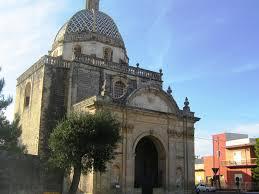- 29) LEQUILE RESULT OF ROMAN CENTURIONS
| The town |
|
According to tradition, the origins of the village date back to the Roman Age, when the centurion Leculo settled in this area and built a villa, from which a village rose up. However, according to more plausible studies the origins of Lequile date back to a settlement of Roman centurions: the name of the town would come from the emblem of legionaries, as a result of the loss of the vowel "a" (from "Le aquile" to "Lequile"). From the 11th century until 1463 the village belonged to the County of Lecce and the Principality of Taranto. In 1291 Ugo di Brienne was the Lord of the town; in 14th and 15th centuries it belonged to Bonomine, De Marco, Sambiase, Santabarbara and Marescallo. In 1433 Maria d'Enghien, countess of Lecce, princess of Taranto and queen of Naples, gave it to baron Guarino from San Cesario, whose family held it until 1531, as a fee. In 1554 Doria became the lord of the village, then it has been conceded respectively to Pansa; dell'Anna family's grandchild, Graffoglietti, Venato, Imparato, and finally to Princes Saluzzo, who were the town's owners from 1690 to 1806, when feudality was abolished. The origins of the name According to a recent research, as well for Leqio Berria and Lequio Tanaro in the province of Cuneo. «The origin of Lequile seems to be connected to Latin expression "ad leucum", so at the beginning, where Lequile rises up, there were probably a "lucus", that is a shining clearing, or a "lacus", that is a clear expanse of water». |
|
|||||||||||||||||||||||
|
|||||||||||||||||||||||
Link utili
- FIGC
- GALLIPOLI
- SUD TIROL
- U.S. LECCE
- SASSUOLO
- PANTANELLI SIRACUSA
- @EXTRACALCIO
- SANT'ANIELLO
- SCIREA CUP
- Salento Sport
- ATALANTA
- EUROSPORT BRINDISI
- ROMA
- BARI
- VIRTUS FRANCAVILLA
- COPPA "ANGELO QUARENGHI"
- NUOVA TARAS TARANTO
- TORNEO FERROLI
- INTER
- MILAN
- CAPO DI LEUCA
- LOS AROMOS ARGENTINA
- NICK BARI
- REAL CASAREA
- JUVENTUS
- Salento Holiday
- AIA
- "Premio La Giovane Italia-I Talenti Del Futuro"
- LA GIOVANE ITALIA
- AIAC
- PANATHLON Lecce
- DIRETTA STREAMING
- Centro Meteo Salento
- AIPAC
- FMSI
- ASD ACTION Professional Sport
- CONI
- Caroli Hotels


























































































































